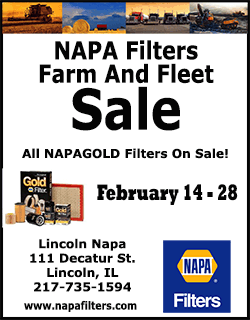Investors' cash buildup comes at a cost
 Send a link to a friend
Send a link to a friend
 [February 11, 2019]
By Richard Leong [February 11, 2019]
By Richard Leong
NEW YORK (Reuters) - Investors sitting on a
mountain of cash built up since late last year may be paying a price for
playing it too safe in the first weeks of 2019.
Individuals and institutions have poured tens of billions of dollars
into money market funds amid the aftershock of last year's punishing
losses from stocks and next-to-nothing from bonds. Ongoing turmoil from
trade tensions between China and the United States, political infighting
in Washington and interest rate increases from the Federal Reserve have
also inspired the rush into cash.
Despite those concerns, Wall Street has staged a comeback to kick off
the new year, with the S&P 500 recording its best month since 2015 in
January, while junk bonds produced their strongest monthly return in
more than seven years.
At same time, the yields on money funds stuffed with all that safe-haven
cash have trickled lower.
Analysts and fund managers said the stampede into cash is
understandable, but safety comes with a steep opportunity cost.
"Investors can penalize themselves. While money market funds offer
safety, they come at a cost as they accept a lower yield," said Jerome
Schneider, head of short-term portfolio management at PIMCO in Newport
Beach, California.

Money market funds' appeal skyrocketed as high-flying FAANG shares (Facebook
Inc, Amazon.com, Apple Inc, Netflix Inc and Google's parent Alphabet
Inc) took a spill with the rest of the stock market, and junk bonds sank
deep into the red in the last weeks of 2018.
U.S. Treasuries eked out slim gains courtesy of the year-end safe-haven
rally. Before then, the Fed's four rate increases in 2018 had been a
drag on the bond market.
That left cash.
Interest rates on cash investments, currently at around 2 percent, are
hardly dazzling. But in the last year they have risen above the rate of
inflation for the first time since the financial crisis, and are up from
near zero over three years ago before the Fed began raising rates.
Money fund assets crested at nearly $3.03 trillion in the beginning of
January, their highest level since March 2010, and they remain close to
that level, according to data firm iMoneyNet.
[to top of second column] |

Traders work on the floor of the New York Stock Exchange (NYSE) in
New York, U.S., February 8, 2019. REUTERS/Brendan McDermid

"I like cash now. You can earn a very reasonable return on cash," said James
Sarni, senior portfolio manager at Payden & Rygel in Los Angeles.
For a graphic on U.S. money funds vs bonds, stocks, click: https://tmsnrt.rs/2tatyA8
Still, the price of playing it safe was never more evident than in January, when
it became clear that the Fed was setting the stage for a hiatus from its
three-year-old tightening cycle. Last week it pledged to be "patient" before
lifting rates further.
Anticipating that dovish turn, the S&P 500 posted a 7.9 percent increase in
January, nearly 6 percentage points above the average yielding money fund, while
junk bonds racked up a 4.6 percent return.
"I worry those investors who have long-term horizons may be hurting themselves,"
said Kristina Hooper, global market strategist at Invesco in New York.
Risk-averse investors could shift some cash into short-term and floating-rate
bond funds to pick up extra yields without extensively lifting their risk
profile, analysts said. Yields on short-term bond funds are averaging about 2.7
percent, while those on floating-rate funds are averaging 2.4 percent.
Such funds can lose money if interest rates rise further. But investors sticking
to the sidelines are already underperforming the big rally in riskier assets so
far in 2019.
"They tend to play it safe for too long," PIMCO's Schneider said.
For a graphic on U.S. money fund assets, click: https://tmsnrt.rs/2N3eYms
(Reporting by Richard Leong; Editing by Dan Burns and Tom Brown)
[© 2019 Thomson Reuters. All rights
reserved.] Copyright 2019 Reuters. All rights reserved. This material may not be published,
broadcast, rewritten or redistributed.
Thompson Reuters is solely responsible for this content.
 |